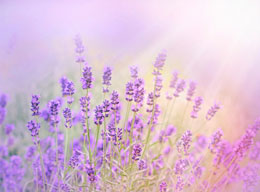
Lavender is a multipurpose herb, planted for its beautiful and fragrant flowers and for obtaining its essential oil. Imagine the scenic beauty of a landscape design covered with vibrantly colored full blooms of this flower. Every hobbyist prefers growing these plants for aesthetic as well as therapeutic purposes. Being a herb native to the Mediterranean region, lavender requires warm and rocky habitat for proper growth and bearing of flowers.
Like any growing project, understand the requirements of this herb and you can succeed in maintaining healthy lavenders. As per your convenience, you can plant lavender either in herb gardens or in pots. With plantation in garden, you can harvest in a high quantity, while growing lavender in containers helps in easy maintenance of the herb. In either of the options, they are grown either by sowing seeds or with stem cuttings. Growing lavender bushes from seeds is a challenge for most people, as they are not easy to germinate.
How to Grow Lavender from Seeds?
Though growing these bushes from seeds is cheaper than purchasing stem cuttings, you need to take extra care for maximum germination. In case you are planning to grow this herb for the first time by sowing seeds, then consider using a high quantity of seeds. In such a case, even if there is less germination, you can have sufficient seedlings for covering the entire plantation area as per your plan. Following are some useful tips for growing lavender.
Select the Variety:
Choosing the right variety of lavender is the most crucial step. Select the best cultivar that thrives well in the soil type and prevailing climatic conditions of your area. Also, make sure to opt for disease and pest resistant varieties. In case you are confused about choosing a hardy variety, consult your local horticulturist.
Soil Preparation:
Lavender herb grows well in well-drained, slightly alkaline, and sandy soil. A sandy soil type is important for proper drainage and maximum growth of the roots, so make sure that you mix the soil with sand before sowing the seeds. Also, check the soil pH and, if necessary, supplement it with appropriate additives to make it alkaline. For poor soil, you can add farmyard compost and/or an all-purpose organic fertilizer to start a lavender garden.
Sowing Lavender Seeds:
As soon as spring arrives, you can sow lavender seeds, preferably in seed trays and/or shallow drills. Regularly moisten the soil to promote germination, but do not make the soil damp and wet, as it can cause rotting of the seeds. Transplant the seedlings in pots or garden soils as soon as you notice development of true leaves.
Growing Conditions:
Considering the basic growing conditions of lavender, it is clearly understandable that you need to plant them in bright sunny areas. Excess humidity can promote disease infestation and damage of lavender plants, so water the plant only when the soil is dry. Fertilization is not necessary for these plants. You can add a layer of mulch to reduce evaporation of soil moisture and control weed growth.
This was a brief overview in regard to growing lavender bushes from seeds. If you are thinking of growing them indoors, then make sure that the pots are placed in areas that receive maximum sunlight, such as near doors and windows. Or else, you can make use of artificial light for optimal growth. Pruning the plants in fall season to about ⅓rd of the height will promote healthy growth. You can harvest lavenders immediately when the flowers turn dark.











RSS